Many uncertainties accompany rental property ownership. However, one thing is for certain, maintenance and repairs are inevitable. Unfortunately, a common mistake for new landlords is underestimating potential maintenance costs and not preparing for the worst. While avoiding many disastrous repairs involves preventive action, it is always a good idea to set aside more emergency funds than you think you will need. To help illustrate how fast repair bills can add up, check out this list of ten budget-busting rental home repairs below.
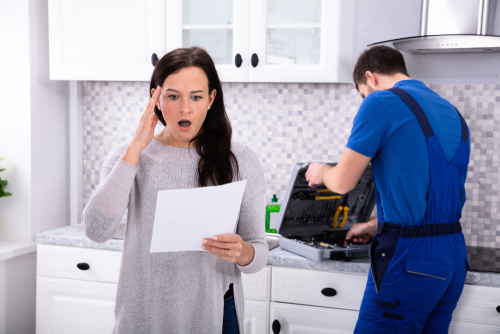
Top Ten Most Expensive Rental Home Repairs
- Structural Problems
- Roof Repairs
- Replacing the Hot Water Heater
- Water Damage
- Septic System Breakdowns
- Major Plumbing Fixes
- Mold Growth
- Electrical Repairs
- The HVAC System
- Termite Infestation
 Structural Problems
Structural Problems
Potential Costs – Structural problem costs can vary widely based on the scope of the issues, materials, equipment needed, and specialize repair required. Small repairs can be between $500 and $2,000, while major issues can be well over $10,000.
Structural repairs refer to any essential structure within the property to include the foundation, support beams, or frame. Issues with the property’s foundation or frame can be devastating, along with a potential safety hazard for tenants depending on the severity of the problem. Some of the most common reasons a rental may require structural repairs include, but are not limited to –
- The property does not meet current or modern safety and health standards.
- Walls were not properly restrained, leading to cracks and potential separation.
- Some faulty area has allowed water to infiltrate and damage parts of the structure or foundation.
- Building materials used were substandard and are failing as a result.
- Pests such as termites have infiltrated the property and damaged key structural supports.
The key here is to spot the warning signs early. These include cracks in walls, sloping floors, or water pooling around the exterior foundation. If you suspect a structural defect, bringing in a qualified structural engineer to perform an inspection is the first step to determining the scope of the issue and potential repairs needed.
How to Avoid Structural Repairs
- Maintain proper drainage around the home by keeping the soil at a slope.
- Divert excess water away from the structure.
- Inspect the roof, foundation, support beams, and walls periodically for any evidence of damage or deterioration.
- Regularly check for evidence of pests that could damage the home.
Roof Repairs
Potential Costs – Roof repairs can be a modest investment compared to replacement. Typical roof patch repairs run between $350 to $850, while a full replacement can be $5,000 to $30,000 depending on the property’s size and material used.
The roof protects the entire home from the elements. Therefore, if it is not in good shape, water or pests can get in and cause further, more extensive, damage. Many circumstances could warrant a roof repair, but keep in mind, extensive damage or repeated need for repair is a sign it may be time for a replacement. Common rental home repairs for a roof include –
- Cracked or Broken Flashing
- Missing, damaged, or Broken Shingles
- Correcting Unsealed Seams
- Ice Dam Buildup
- Improperly Installed Skylights or Vents
- Clogged Gutters
How to Avoid Costly Roof Repairs
- Inspect the roof annually to look for trouble spots
- Identify weak spots and promptly make repairs to minimize damage
- Clean gutter seasonally and ensure proper water flow
Replacing the Hot Water Heater
Potential Costs – Around $800 to $3,000
No landlord wants the after-hours call that a tenant has no hot water. When this happens, it is very likely the repair bill will be significant. Anytime there is evidence of malfunction, it needs to be addressed immediately. Keep in mind, a water heater not working as it should can lead to flooding or more extensive damage to the surrounding area. That said, be on the lookout for these common signs your water heater unit is on the fritz.
- The water heater is old (it is just a matter of time)
- Water temperature is inconsistent, or there is no hot water at all
- Unit is leaking
- There is reduced water flow
- Water has an odor or any discoloration
- The unit is making noises it was not previously, especially when coming on or off.
How to Extend the Life of a Water Heater
- Avoid Clutter – Instruct tenant not to store any items within several feet of the water heater. Thus, allowing for proper airflow reduced fire risk and room to notice malfunctions and complete repairs.
- Periodically Test the Pressure-Relief Valve – This is a built-in safety check that automatically releases tank pressure if it gets too high to prevent an explosion. So, make sure it is functioning properly at all times.
- Flush the Tank – It is a good idea to drain a few gallons of water from the water heater into a bucket at least once per year. This allows owners a chance to examine the water. If dirt and debris are found, perform a more thorough cleaning.
- Check for Corrosion – Check any gas lines and the anode rod for signs of damage or corrosion. If the anode rod is fully corroded, it cannot effectively do its job attracting corrosion, so it does not get into the tank. So, replace as needed, but they typically last 3 to 5 years. That said, any corrosion on gas lines needs immediate attention.
 Water Damage
Water Damage
Potential Costs – According to Home Advisor, homeowners pay around $1,074 to $4,090 for water damage repairs. That said, the extent of the damage can see this number climb much higher.
According to Forbes, 1 in 50 homeowners each year will file an insurance claim for water damage. In fact, water damage claims account for over 20% of all homeowner’s insurance filings. Water is inherently very detrimental to building materials. It causes wood rot, can rust metal over time and can lead to mold growth if not properly treated. So, water damage is one of the most unpredictable and costly rental home repairs. Signs to watch out for include –
- Musty or Damp Smells
- Visible Leaks
- Discolored Stains on Walls or Ceiling
- Peeling Paint
- Sweating or Dripping Pipes
Ways to Prevent Water Damage in Your Rental Property
- Seasonally Clean Gutters
- Ensure tenants know where the main shut-off valve is and how to operate it in an emergency.
- Disconnect Exterior Hoses
- Inspect the Home Regularly
- Properly Maintain Appliances
- Instruct tenants to report any spikes in water bills or loss of water pressure in the home.
Septic System Breakdowns
Potential Costs – Typical septic system repairs averaged around $1,750, with major issues costing $5,000 or above. That said, prepare to hand over around $100 to $500 to have a technician come out to inspect the problem.
Every rental property needs a working septic system; there is no way around it. So, when it breaks down, it causes a huge inconvenience for both landlords and tenants. This is why preventing these types of rental home repairs relies on landlords taking the initiative to recognize small problems before becoming big ones. Therefore, if a tenant reports any of the issues below, take them seriously and work to get to the root of the problem.
- Slow or Gurgling Drains
- Clogged Toilet
- Standing or Smelly Water in Yard
- Water backing Up into Toilet
- Sinkholes in the Yard or Overly Lush Spots
Ways to Prevent Sewer Backups and Damage
- Promptly address repair requests
- Pump/Clean out the sewer every 3 to 5 years
- Have a professional inspect the sewer and sewer lines every 3 to 5 years
- Remind tenants not to flush anything but bath tissue down the toilet
Major Plumbing Fixes
Potential Costs – Whether it is a burst pipe, clogged sewer line, or just replacing old pipes, costs can add up fast. In addition to the cost of materials, plumbers can charge anywhere from $50 to $200 per hour.
Plumbing repairs cover a wide variety of potential issues. In some cases, landlords need to replace old pipes with a more reliable modern material, and sometimes things break down. Due to the wide scope of repairs, proactive action is vital. Ensure your tenant knows the warning signs of a frozen pipe and knows where to shut off the main water valve if a leak or break occurs. In addition, look for these warning signs that point towards a potential plumbing issue.
- Sudden Low or No Water Pressure
- Discoloration or Rusty Water
- Flaking in Exposed Pipes
- Visible Leaks or Cracks
- Water Backing Up into Tubs, Sinks, or Toilet
Tips for Preventing Plumbing Damage
- Do not use corrosive or harsh chemical drain cleaners
- Keep grease and food out of drains
- Insulate exposed or vulnerable pipes in the colder weather
- Maintain sewer lines and septic tank by professional cleaning every few years
Mold Growth
Potential Costs – Mold remediation is expensive! On average, homeowners pay around $13.50 to $30.00 per square foot for mold remediation. Small scale projects may be several hundred dollars, but large projects will most certainly cost you thousands.
Mold is a fungi that grows in damp conditions on virtually any surface. The multicellular structures produce spores that get into the air and can cause potential health concerns. Mold allergens can trigger asthma, cause itching eyes, allergic reactions, and cause lasting lung damage and even memory problems in serious cases. No matter what, mold is a huge liability for landlords, and it must not be taken lightly. So, keep watch for the following circumstances that could signal mold growth –
- Musty or Damp Odor
- Discolored Walls or Ceilings
- Fuzzy Textures Spots on surfaces
- Allergy Symptoms in Tenants
How to Prevent Mold Growth in Your Rental Property
- Address leaks right away and ensure the area and all materials dry properly
- Monitor areas with corrected water damage for several days for any evidence of mold
- Run a dehumidifier in areas prone to mold growth or dampness, such as a basement
 Electrical Repairs
Electrical Repairs
Potential Costs – According to Homeguide.com, the average cost to repair light fixtures, outlets, switches, or fans ranges from $141 to $419. However, larger repairs or projects such as installing wiring or panel replacement can range from $2,000 to $6,000.
Electrical problems present a costly and dangerous problem for landlords. For example, a short in an outlet or switch could present a fire and safety hazard. Therefore, it is critical to diagnose and fix these issues right away. Failing to do so risks further property damage and, you guessed it, even more, expensive repairs. The signs of an electrical issue in the home include –
- Sparking or Warm Outlets
- Buzzing Sounds
- Tripped Breakers
- Flickering Lights
- Frequently Burnt-Out Bulbs
How to Prevent Electrical Damage
- Have a licensed electrician inspect any reported issues of malfunctioning fixtures
- Address signs of rodent activity as they are known to chew through or damage wiring.
The HVAC System
Potential Costs – If you need to replace the HVAC system in your rental property, expect to pay around $4,800 to $9,500. However, like many other rental home repairs, the cost may vary depending on the scope of work needed.
The HVAC system is one of the hardest working components in your rental home. That said, there is never a good time for it to break down. Not to mention, proper maintenance of the HVAC directly affects the air quality in the property, which affects your tenants’ health. So, keep all of these components running their best and watch out for warning signs of trouble like the ones below –
- Odd, new, or sharp noises coming from the unit
- Leaks
- Inability to cool or heat despite adjusting the thermostat
How to Prevent HVAC Problems
- Partner with a reputable HVAC vendor to perform maintenance and inspections on the unit
- Ensure tenants replace or clean the HVAC filter every quarter
- Keep debris and leaves from piling up on or around the unit
 Termite Infestation
Termite Infestation
Potential Costs – The extent of the damage is a big cost factor. However, treating for the termite infestation ranges from $200 to $1,000. In addition, if the pests caused damage to the structure, repair costs could be in the thousands.
According to popular pest control service Orkin, termites cost Americans around $5 billion annually in property damage. With termite damage taking between 3 and 8 years to visually show, that gives these pests a lot of time to wreak havoc on your rental property. So, like many other rental home repairs, spotting the warning signs early is critical to mitigating cost. Check out a few warning signs of a potential termite problem below –
- Discolored or drooping drywall with small pinpoint holes
- Peeling paint that has not been found to result from water damage
- Buckling wood or laminate flooring
- Maze-like patterns in furniture, flooring, or walls
- Mud tubes climbing the foundation of your home
- Flying termite swarms anywhere on your property
How to Avoid a Termite Infestation and Resulting Damage
- Have regular inspections from a qualified pest specialist
- Remove access by sealing cracks and entry points around the home’s foundation, windows, doors, and walls
- Use cellulose-free mulch or keep it a minimum of 6 inches away from the foundation
- Remove other food sources such as dead trees or debris in the yard
- Ensure water does not pool around the outside of the home and quickly repair any interior leaks
The Stress-free Way to Handle Rental Home Repairs
Repairs will happen, but property owners can lessen some of the costs of an emergency system failure with an ounce of prevention. Coordinating maintenance is a big job, along with all of the other tasks an owner must complete. So, for a stress-free way to care for your rental, why not trust the experts.
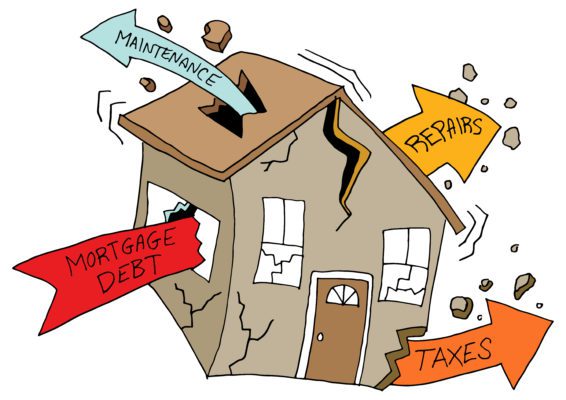
At Bay Property Management Group, our team of experienced property managers works with tenants to assess and address concerns quickly. Moreover, we have both in-house maintenance technicians and an extensive list of trusted vendor relationships to ensure you receive quality rental home repairs at a fair price. So, if you are looking for a way to manage repair costs while getting the most from your investment property, give us a call today to see how full-service rental management can benefit you!

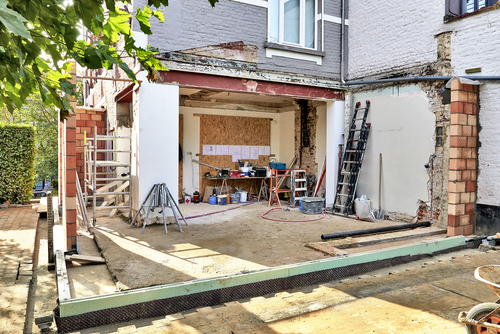 Structural Problems
Structural Problems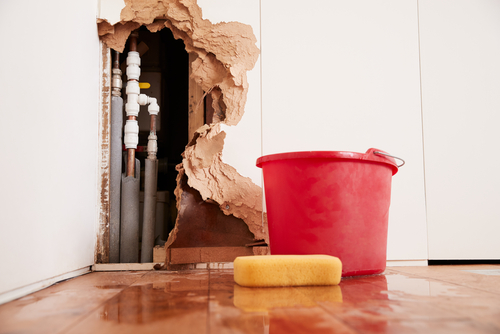 Water Damage
Water Damage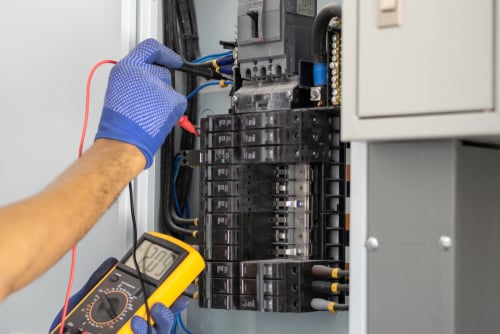 Electrical Repairs
Electrical Repairs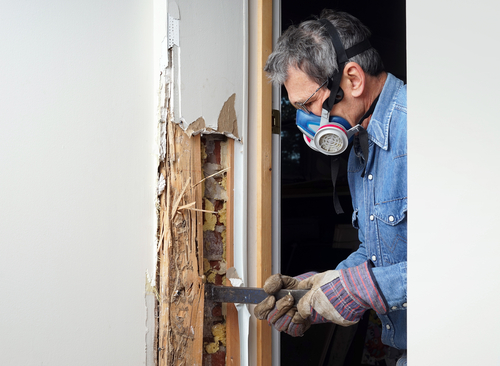 Termite Infestation
Termite Infestation